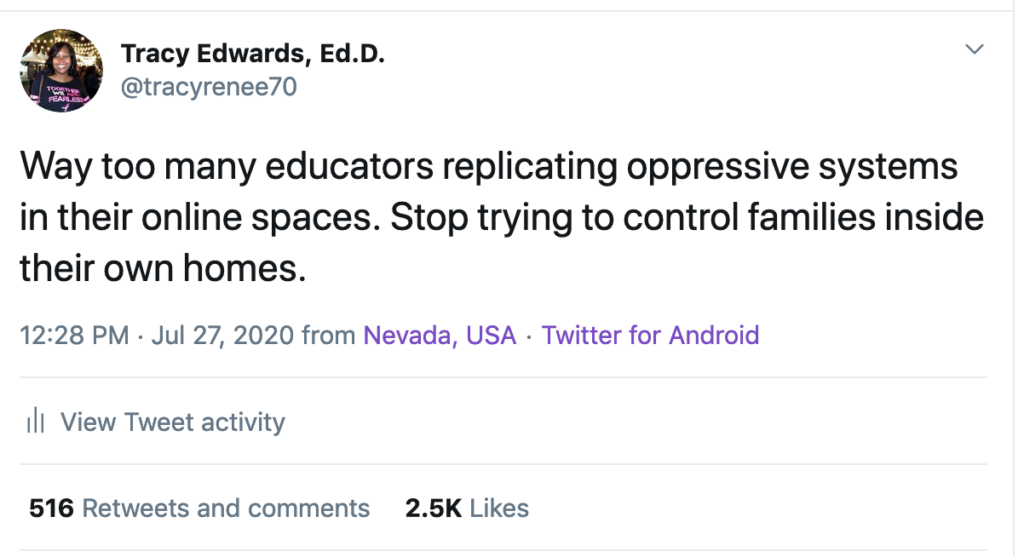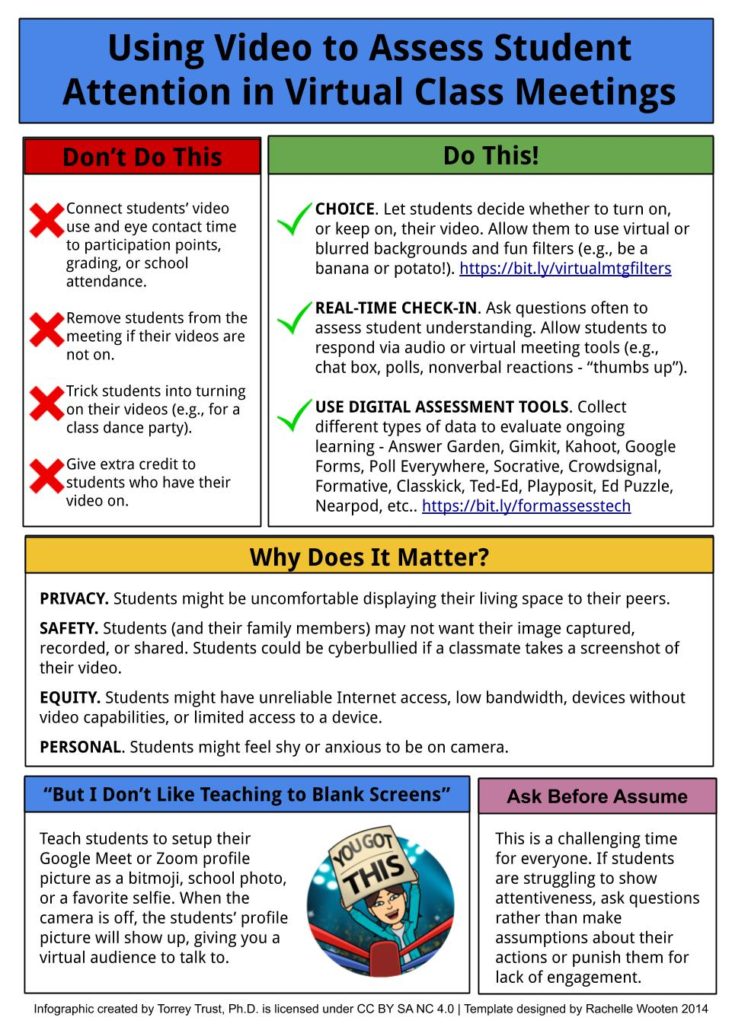While perusing Twitter yesterday, I came across an educator who insisted that she was requiring cameras on during online instruction this fall because she teaches at a 100% high poverty school and needs to see what’s happening in their homes. The assumptions here are pretty telling. Assuming poor families need to be watched? Why is that? What about poverty equates to the need for surveillance during lessons? Given the recent global uprising around police brutality, I find this more than a little disturbing. She never mentioned the race of her 100% high poverty students, but I suspect by her attitude and comments that they are likely Black or Brown. By her own admission she needs to see inside the homes of her students because, in her mind, low income means she must be the teacher, guardian, savior, and protector.
I then posted my own tweet hoping to get people to collectively rethink why cameras in homes could be seen as intrusive.

Most of the opposition to “no cameras” was “It’s not about control. I’m trying to connect with my students!” I’ve been teaching at least partially online for years at this point. There are plenty of other ways to connect with your students that don’t involve forcing them to turn their camera on so that teachers can “see” what they’re doing and creating a possibly combative dynamic between parents and teachers. We must shift our mindsets. What we can “see” has very little impact on learning and we are doing ourselves an incredible disservice by setting up a dynamic where families feel untrusted, undervalued, and overpoliced in their own homes. There are plenty of ways to connect with students that don’t involve pushing cameras into personal spaces. Here are a few:
- Have students post pictures of people, places, and things that they value. Invite them to tell the class about them in a few sentences. Teach them in real-time by modeling what commenting and feedback looks like in an online learning space.
- Use the chat and microphone options. I’ve found that students who may not feel comfortable with the camera are quite active in the chat and volunteer to use the microphone often.
- Using virtual whiteboards so that students can jot down thoughts, questions, or simply share with their classmates around content.
- Have students react to content with emojis (thumbs up/down, smiley faces, and gifs when possible (this is already a Zoom function; hoping Google Meets catches up).
- Play virtual games where kids have to collaborate while using skills you’re trying to teach or assess. I’m really loving the concept of virtual escape rooms and virtual scavenger hunts where kids try to find and/or complete tasks collaboratively.
Of course, these are just a few ideas. Read more ideas here if you’re still wondering what connections look like in your online space.
Building a community is a crucial part of what teachers do. It’s even more important in our online spaces. Let’s avoid the temptation of setting us an “us” versus “them” by requiring a camera in order to connect with students. Or by setting rules about not eating. Or by making wearing a uniform a requirement. Or by penalizing students for not missing a live class that should be recorded and readily available anyway. This collective “reimagining” of education has quickly shifted into replicating practices that never served all students well, especially those in over-policed, under-resourced communities. We must do better.



